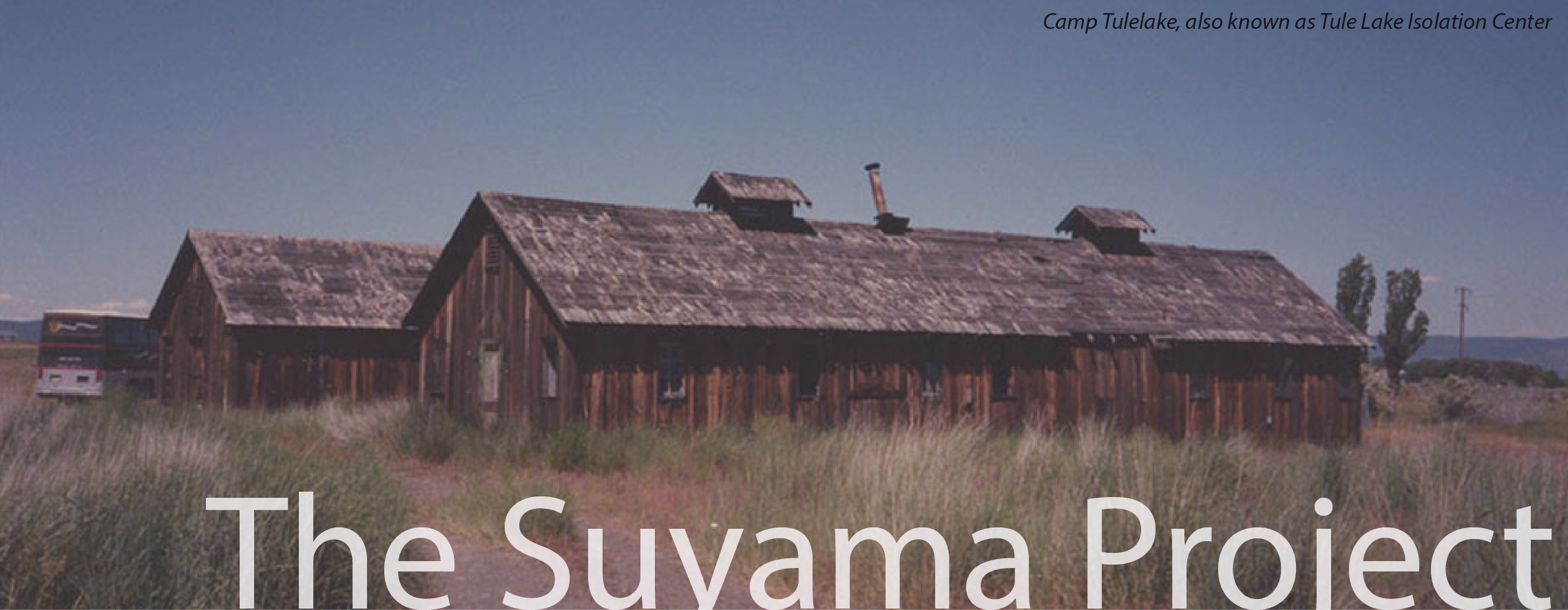
|
UCLA Asian American Studies Center's Suyama Project aims to preserve the history of Japanese American resistance during World War II, including, but not limited to the 100th/442nd Regimental Combat Team draftees, Army and draft resisters, No-Nos, renunciants, and other Nikkei dissidents of World War II. The Suyama Project is made possible through the generous gift of an anonymous donor who wanted to honor and remember the legacy of resistance, broadly understood. |
|
Our archives database is being updated. Please visit us again for the latest archives soon. Letters to the Editor Eji Suyama was a prolific contributor to the various Japanese American newspapers and probably has been published in all the Nikkei newspapers, at some point. Suyama's editorials were brash and opinionated but always fair and fearless. Please click here to view available editorials. Draft Resisters
More than 300 Japanese American men refused to serve in the U.S. Army during World War II unless they and their families were first released from U.S. concentration camps. These men were tried in court, with most judges taking a narrow reading of whether or not the men had refused to serve, rather than taking into consideration that they were being drafted from a concentration camp. Only Federal District Judge Louis E. Goodman who presided over the Tule Lake draft resisters dismissed the charges. Most of the draft resisters served two to three year federal prison terms but were later pardoned by President Truman. [Read More]
Please click here for more Draft Resisters archival materials. Military Resisters
There were hundreds of Japanese American serving in the U.S. Army before Japan attacked Pearl Harbor. However, after Pearl Harbor, Japanese American servicemen were placed into segregated units and had their weapons taken away. The government also denied the request of these men to go assist their families on the West Coast who were being forcibly placed into U.S. style concentration camps. Those who protested their discriminatory treatment by the U.S. Army either ended up in the 1800th Engineer General Battalion or were imprisoned at Leavenworth. [Read More]
Please click here for more Military Resisters archival materials. Moab/Leupp Citizen Isolation Center
Please click here for more Moab/Leupp Citizen Isolation Center archival materials. No-Nos
In order for the U.S. government to separate the so-called “loyal” from the “disloyal” Japanese Americans, the government came up with a so-called loyalty questionnaire. The two most controversial questions were questions 27 and 28. Those who left the two spaces blank or answered yes with a “if-yes” conditional clause or answered “no” to each question were labeled as “no nos” and sent to Tule Lake, which was converted from a War Relocation Authority camp into a Segregation Center. [Read More]
Please click here for more No-Nos archival materials. Tule Lake War Relocation Authority Camp Block 42
In February 1943, the U.S. military police illegally rounded up close to 35 men living in Block 42 of the Tule Lake War Relocation Authority camp for refusing to register for the so-called loyalty questionnaire. [Read More]
Please click here for more Tule Lake WRA Camp Block 42 archival materials.
|